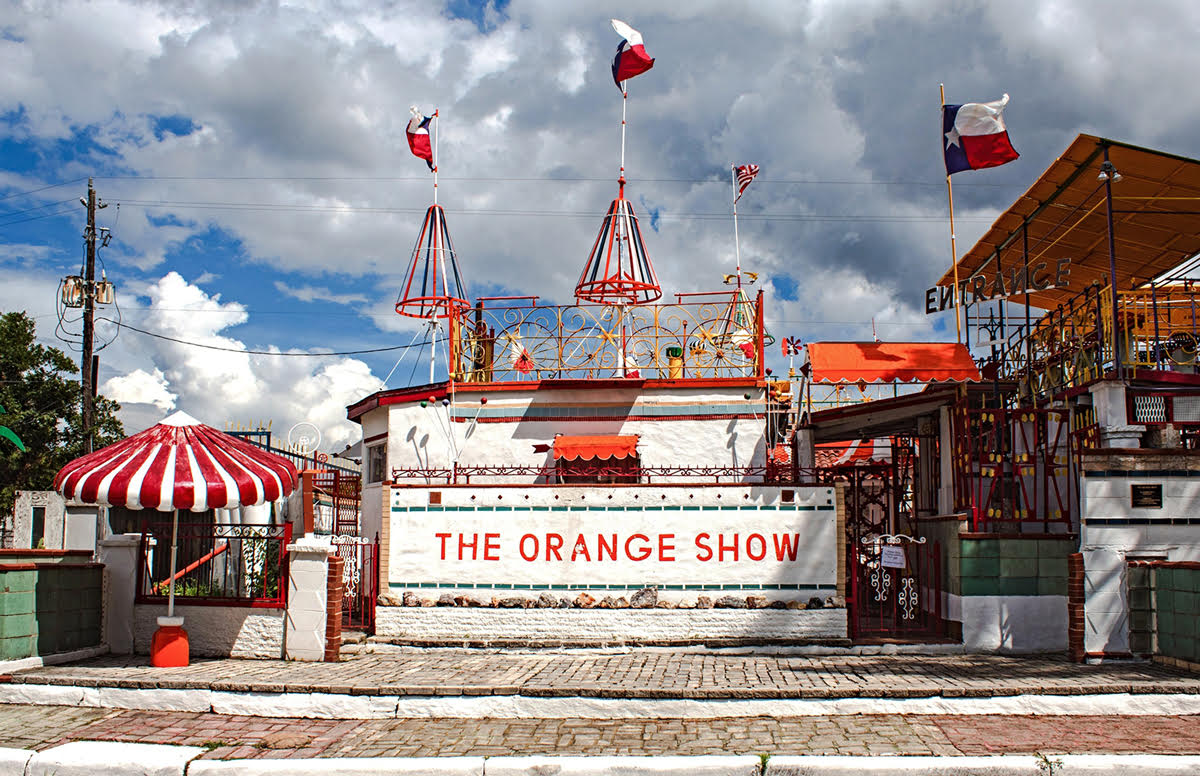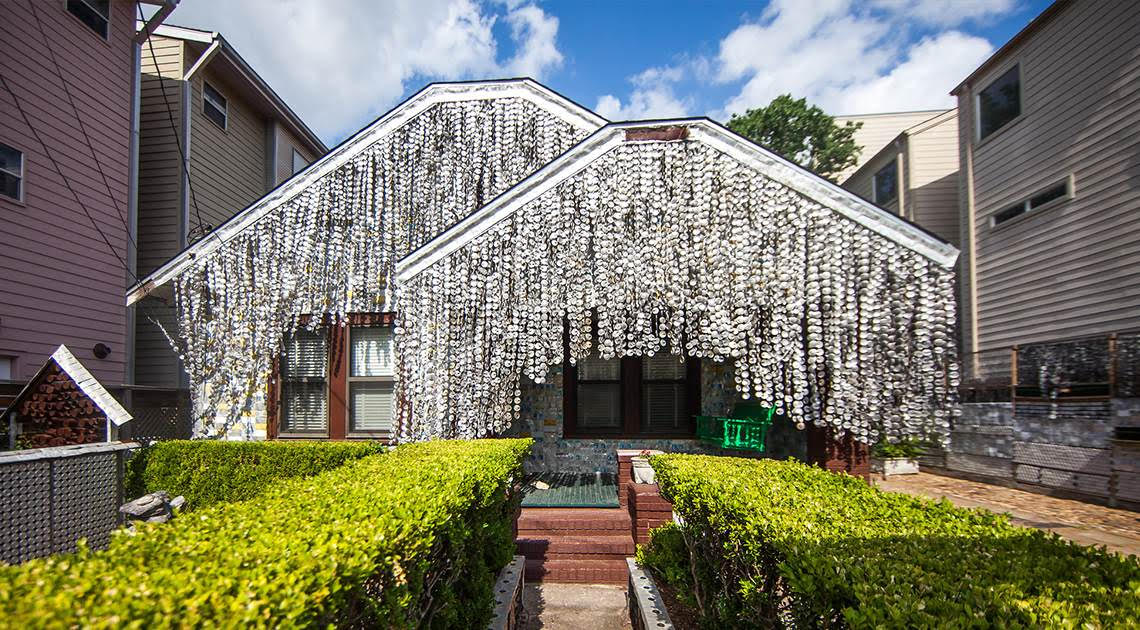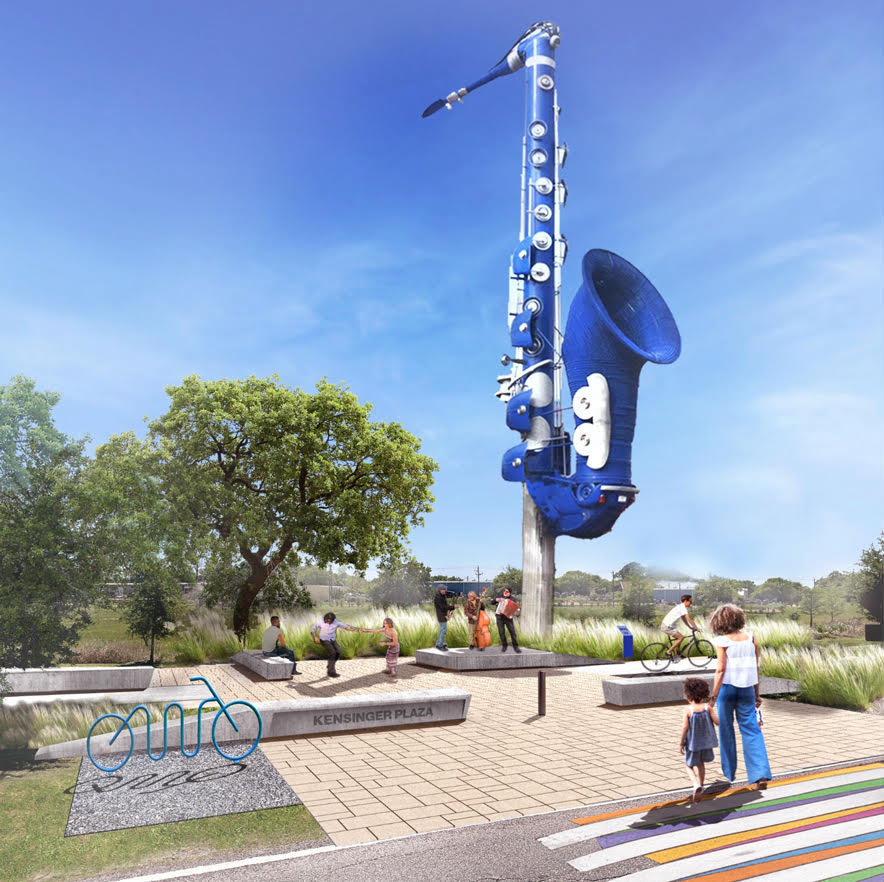In 1956, mail carrier Jeff McKissak began constructing a massive architectural tribute to his favorite fruit. Working entirely on his own and entirely by hand, McKissak spent the next quarter century assembling farm implements, bricks, mannequins, and more into a 3,000-square-foot, multi-level mosaic labyrinth of wishing wells and arenas. The idea was to inspire health and longevity in visitors by encouraging them to eat oranges. The result was one of the world’s most accomplished folk art environments.
McKissak died in 1980. To preserve his achievement, Marilyn Oshman formed the nonprofit Orange Show Center for Visionary Art (OSCVA). She assembled a wild bevy of donors, including both Dominique de Menil and members of ZZ Top, and bought and reopened the Orange Show to the public in 1982. “The original maintenance team, programmers, and audience came mostly from the University of Houston’s nearby art department,” OSCVA curator of programs Pete Gershon tells Surface. “Some of these students have since become some of the city’s most accomplished artists.”
If time has been kind to the installation’s reputation, it’s been hard on the work itself. “It’s an open-air structure, so rust and biological growth are constant problems,” Gershon says. “More significantly, there is no foundation underneath the monument so it’s been subject to constantly shifting ground through alternating floods and droughts, leading to uneven walkways and cracking walls.”
Fortunately, the National Parks Service’s Save America’s Treasures program has awarded a grant for a two-year renovation that will stabilize the structure and establish an artist-led corps of community preservationists. “There are now generations of Houstonians who’ve grown up with the Orange Show and credit it as an important early influence that led them to pursue a creative life,” Gershon says.
It’s one of a pair of major projects on OSCVA’s books. “Bob ‘Daddy-O’ Wade was a longtime friend of the organization,” executive director Tommy Ralph Pace tells Surface. “He was a university-trained artist but a true free spirit who looked at the world in a unique way and made larger-than-life sculptures from repurposed materials that perfectly embody the sense of fun and discovery we value at OSCVA.” One of those is Smokesax, a 60-foot blue saxophone Wade made of oil field pipe and car parts, which jazzed up the nearby Brays Bayou for some two decades before coming home to OSCVA in 2013. “While storing its individual pieces on our property,” Gershon says, “we’ve been working to site the sculpture and fundraise for its restoration.” A $1 million fund for its reinstallation is already being put to use.
As are almost six acres and a 31,000-square-foot midcentury building nearby, which the organization has acquired to incorporate into a new campus designed by Rogers Partners. A sizable ramp will move visitors through open workshops and highlights from the center’s extensive collection of art cars, which are normally only on view during its beloved annual parade. “There will be this part of [the new campus] that focuses on art cars and support for the artist community,” Pace says. “But I think even those who feel like they don’t understand art can step over that barrier visiting here. It’s a place you will be able to get lost for hours.” Not unlike the Orange Show itself.


